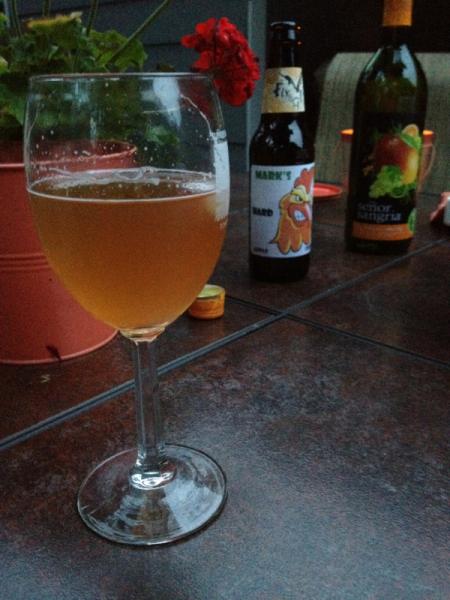Bevilaquafoto
Active Member
Hello, everybody
I have been brewing beer for a little while now, and realized that I could use my beer brewing gear to make hard cider. I have been searching the forums, and the videos in an effort to not ask questions that have already been responded to, but I do have a question about timing. I am using one gallon of unfiltered, pasteurized apple juice with no preservatives. Not even ascorbic acid. I cooked down a pound and a half of frozen blueberries (medium temperature, just to release juice and flavor). I added a little under a pound of honey to the blueberries, and then pitched 1/5 of a vial of White Labs English cider yeast. This was 24 hours ago. The color is beautiful, and I AM seeing fermentation. I have a blow off tube coming out of my carboy into a bowl of sanitizer. It is bubbling slowly, but steadily. I am concerned that there is not as vigorous fermentation as I am used to when brewing beer. Is this normal? Is the fermentation slower? Also, how much time do I leave it in the carboy before changing to an airlock, then how much time should it sit with the airlock? I was thinking about two weeks in the carboy with the airlock. Is this correct? If anyone has any thoughts, it would be greatly appreciated. Please forgive these simple questions, but I am new to this, and trying to learn all I can.
Thank you!
Lorenzo
I have been brewing beer for a little while now, and realized that I could use my beer brewing gear to make hard cider. I have been searching the forums, and the videos in an effort to not ask questions that have already been responded to, but I do have a question about timing. I am using one gallon of unfiltered, pasteurized apple juice with no preservatives. Not even ascorbic acid. I cooked down a pound and a half of frozen blueberries (medium temperature, just to release juice and flavor). I added a little under a pound of honey to the blueberries, and then pitched 1/5 of a vial of White Labs English cider yeast. This was 24 hours ago. The color is beautiful, and I AM seeing fermentation. I have a blow off tube coming out of my carboy into a bowl of sanitizer. It is bubbling slowly, but steadily. I am concerned that there is not as vigorous fermentation as I am used to when brewing beer. Is this normal? Is the fermentation slower? Also, how much time do I leave it in the carboy before changing to an airlock, then how much time should it sit with the airlock? I was thinking about two weeks in the carboy with the airlock. Is this correct? If anyone has any thoughts, it would be greatly appreciated. Please forgive these simple questions, but I am new to this, and trying to learn all I can.
Thank you!
Lorenzo



